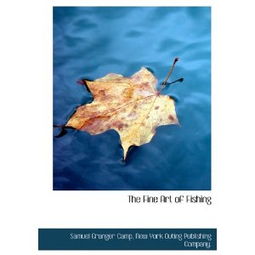Content:
In times of extreme hardship and scarcity, such as during a widespread famine, the ability to fish becomes a critical skill for survival. Famine caves, often hidden and treacherous, can be a goldmine for sustenance if approached with the right knowledge and techniques. Here, we delve into the art of fishing in famine caves, offering essential tips and tricks to ensure you can catch your meal without depleting the already strained resources.
Understanding the Famine Cave Environment
Before you set out to fish in a famine cave, it's crucial to understand the unique environment you'll be facing. These caves are typically dark, humid, and may contain limited light. Fish in such conditions have adapted to survive, which means they might be less visible and more elusive. Familiarize yourself with the cave's layout, potential hazards, and the species of fish that inhabit it.
Equipment Selection
The right equipment can make all the difference in a survival situation. Here's what you'll need:
Fishing Rod and Line: Choose a rod and line that are durable and versatile. A telescopic rod is ideal for adjusting to the cave's dimensions.
Bait: In a famine, natural bait might be scarce. Consider using alternatives like insects, small animals, or even bits of food you have on hand.
Flashlight: A powerful flashlight is essential for navigating the dark cave and spotting fish.
Knife: A knife can be used for cutting line, preparing bait, and other survival tasks.
Tackle Box: A small tackle box with hooks, sinkers, and swivels can be invaluable.
Preparation and Entry
Scout the Cave: Before entering, thoroughly inspect the cave's entrance and surroundings. Look for signs of fish, such as bubbles or movement in the water.
Dress Appropriately: Wear appropriate clothing and footwear that can protect you from the cave's environment and potential hazards.
Secure Your Entry: Use rope or other secure methods to ensure you can easily exit the cave in case of an emergency.
Fishing Techniques
Patience is Key: Fish in caves are often slow-moving and less active than those in open water. Be patient and wait for the right moment to cast.
Use Submerged Bait: In the dark, fish may rely more on scent than sight. Use bait that can sink and release its scent into the water.
Adjust Your Line Depth: The depth at which you fish will depend on the species and the cave's layout. Experiment with different depths to find where the fish are hanging out.
Avoid Overfishing: It's essential to fish sustainably. Only take what you need and leave enough for the fish to replenish their population.

Be Prepared for Challenges: The cave may have strong currents, narrow passages, or even traps. Be ready to adapt your technique or retreat if necessary.
Safety Precautions
Stay Hydrated: Bring enough water to stay hydrated while you're in the cave.
Monitor Your Air Supply: If the cave is deep or air circulation is poor, be mindful of your oxygen levels.
Avoid Dehydration: Wear moisture-wicking clothing and use a towel to dry off if you get wet.
Know Your Limits: If you feel exhausted or disoriented, it's better to leave the cave than to risk getting lost or injured.
Post-Fishing Care
Cooking: If you manage to catch fish, ensure they are properly cleaned and cooked to avoid foodborne illness.
Storage: Store any excess food carefully to prevent spoilage.
Restoration: After a successful fishing trip, take time to rest and recover your strength.
In conclusion, fishing in a famine cave requires a blend of patience, knowledge, and adaptability. By following these essential tips, you can increase your chances of survival and ensure that you have a reliable source of food during these challenging times. Remember, the key to success is not just catching fish, but doing so in a way that supports the ecosystem and your long-term survival.












